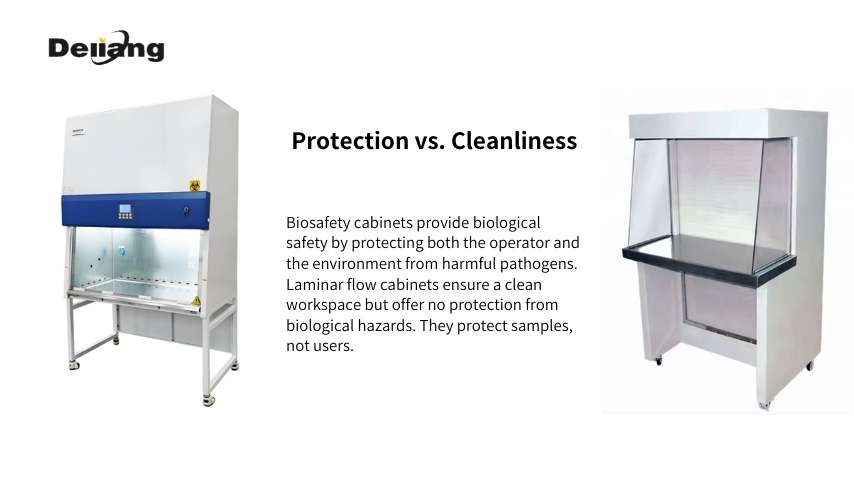Biological Safety Cabinets vs Laminar Airflow Workbenches
Understanding the critical differences in laboratory safety equipment
In laboratory settings where sterility and safety are paramount, both biological safety cabinets (BSCs) and laminar airflow workbenches play critical roles. However, they serve distinct purposes and come with specific features tailored to different applications.
Key Differences Summary
| Characteristic | Biological Safety Cabinet (BSC) | Laminar Airflow Workbench |
|---|---|---|
| Main Purpose | Protect user, product, and environment | Protect product from contamination |
| Protection Level | High (Personnel, product, environment) | Low (Product only) |
| Hazardous Substances | Suitable for biohazards | Not suitable for biohazards |
| Airflow | Complex airflow patterns, hepa filtered in/out | Unidirectional airflow, HEPA filtered air in |
Common Questions and Answers
Q: When should a BSC be used instead of a laminar flow workbench?
A: A BSC should be used when working with hazardous biological materials that require user and environmental protection.
Q: Can a laminar flow workbench protect the user?
A: No, it is designed to protect the product only and should not be used with biohazardous materials.
Q: What types of laboratory work are suitable for a laminar flow workbench?
A: Sterile tasks such as cell culture and aseptic processes, where contamination of the product must be minimized.
Q: How does HEPA filtration differ between these cabinets?
A: BSCs use HEPA filtration for both incoming and outgoing air, while laminar flow cabinets filter incoming air only.
Q: Are there regulatory standards for these types of cabinets?
A: Yes, both types of cabinets adhere to international safety and Environmental standards to ensure effectiveness.
Conclusion
Both biological safety cabinets and laminar airflow workbenches are integral to maintaining safe and sterile laboratory environments. Understanding their unique features and appropriate applications ensures optimal protection and compliance with industry standards. Solutions from Deiiang™, as designed by Deiiang Jason.peng, align with these criteria to provide state-of-the-art laboratory equipment.
References
- International Organization for Standardization. ISO 14644-1: Cleanrooms and Associated Controlled Environments.
- Occupational Safety and Health Administration (OSHA). Guidelines for Laboratory Safety and Biological Safety Cabinets.
- Centers for Disease Control and Prevention (CDC). Biosafety in Microbiological and Biomedical Laboratories (BMBL).
- The National Institutes of Health (NIH). Guidelines for the Use of Biological Safety Cabinets.
- World Health Organization (WHO). Laboratory Biosafety Manual.
- NSF International. NSF/ANSI 49: Biosafety Cabinetry - Design, Construction, Performance, and Field Certification.
- The Institute of Environmental Sciences and Technology (IEST). IEST-RP-CC002: Laminar Flow Clean air Devices.
- U.S. Pharmacopeial Convention (USP). General Chapter <797> Pharmaceutical Compounding - Sterile Preparations.
Laboratory Safety Equipment Comparison | Created for Educational Purposes
All content based on provided research material
 +86 18186671616
+86 18186671616 Jason@cleanroomequips.com
Jason@cleanroomequips.com
 MENU
MENU




